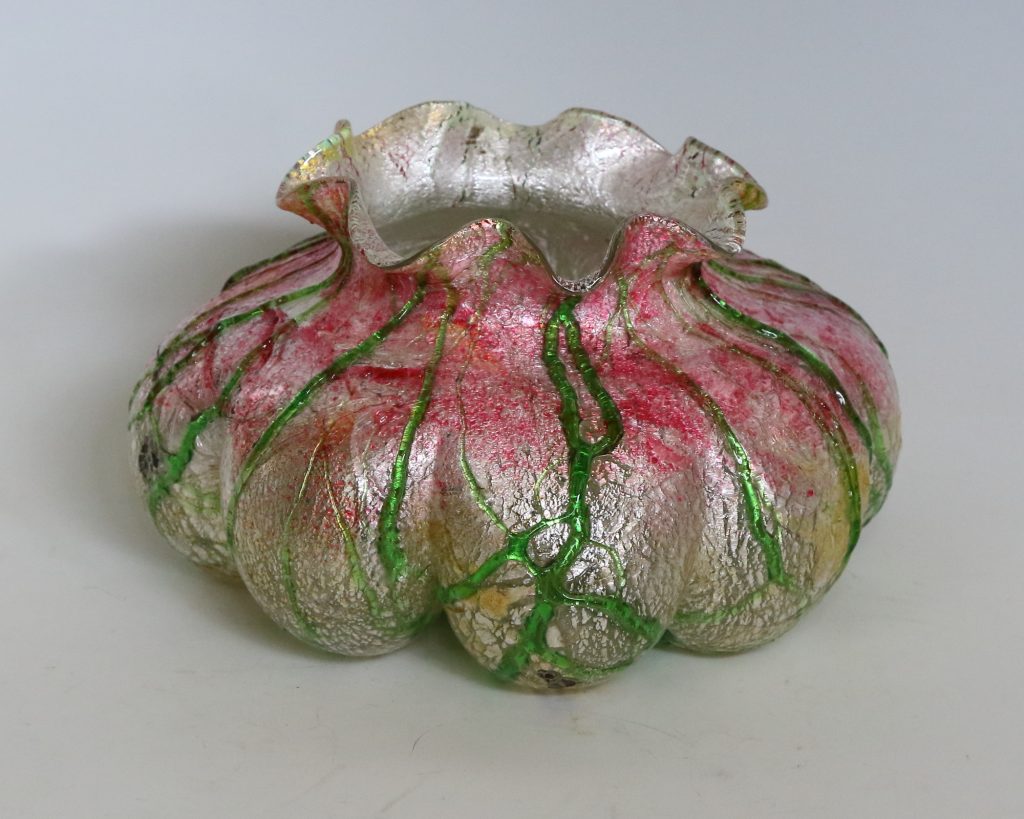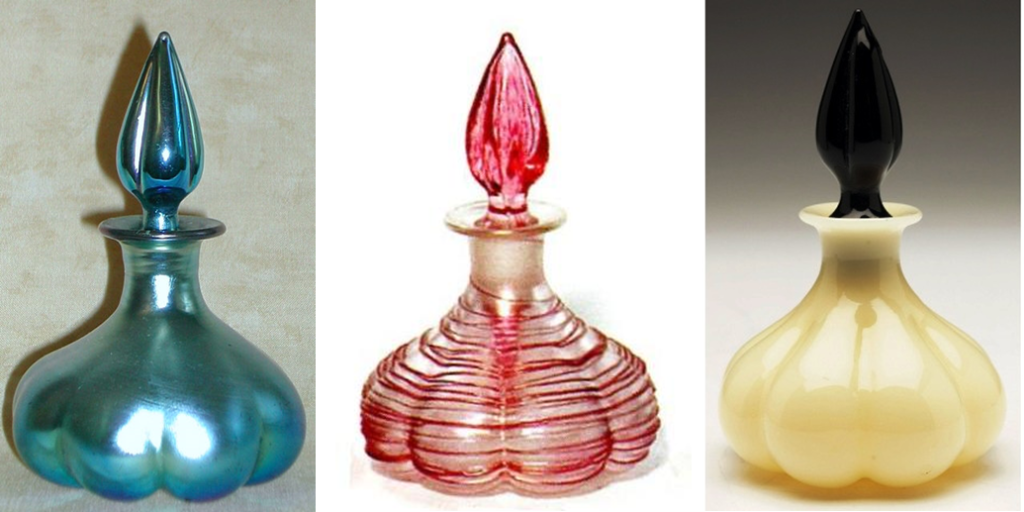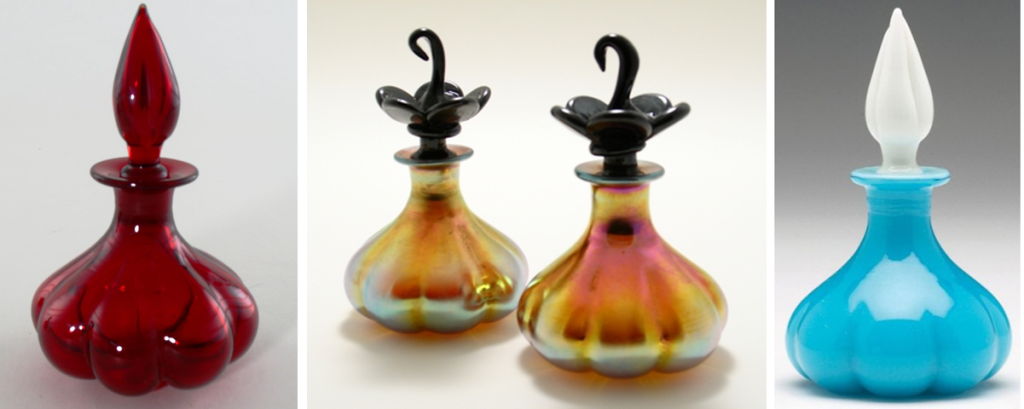Frederick Carder Stevens & Williams Translations
May 2, 2023
Issue 3668
The Stourbridge, England, glass industry at the end of the 19th century housed some of the greatest names in English glassmaking. Frederick Carder entered that world of glass in 1881 when he joined Stevens & Williams with the help of John Northwood. The beauty of John Northwood’s work (for example, the famous copy of the Portland vase) influenced Carder’s entry into glassmaking. The Silveria vase shown below was created around 1900 when Carder was still at Stevens & Williams. Silveria was only made for a short period due to the difficulty of keeping the silver foil intact between layers of glass. I believe Carder was one of the Silveria designers.
With that in mind, it’s hard not to notice the similarity of the melon shape which was translated into the popular Steuben shape number 1455 cologne bottle. I paged through line drawings in Gardner’s book to see if there were other objects based on the same melon shape, and found several. The 1455 shape includes a matching puff box. There are also three decanters (1184, 2387, and 6342), two vases (1458 and 1816), and a vase/lamp base (3554). It’s interesting to see how one shape is translated into other objects.
There was only one picture of a decanter in our shape gallery and no photos of the vases, whereas there are about thirty photos of the cologne bottles. Is it possible that the cologne bottle was very popular but the other objects were not? I do know that I would love to see an example of the shape number 6342 decanter, as the line drawing has mention of the word “Orchid” next to it. I’ll bet it is beautiful!
Below are just six examples of the many color combinations in which we find the melon-shaped cologne bottle.
SAVE THE DATE FOR SYMPOSIUM
Mark your calendars! The annual Carder Steuben Glass Association Symposium will take place from September 7-9, 2023 at the Corning Museum of Glass in Corning, New York. More information on the program and registration details will be available this summer. We hope to see you there!
UPCOMING AUCTIONS FEATURING STEUBEN GLASS
- Gold N’ Times — May 3, 2023 Offering a mix of Carder-era and modern Steuben glass including a Plum Jade acid cutback vase.
- Cottone Auction — May 17, 2023 Features several Carder and modern Steuben items.


